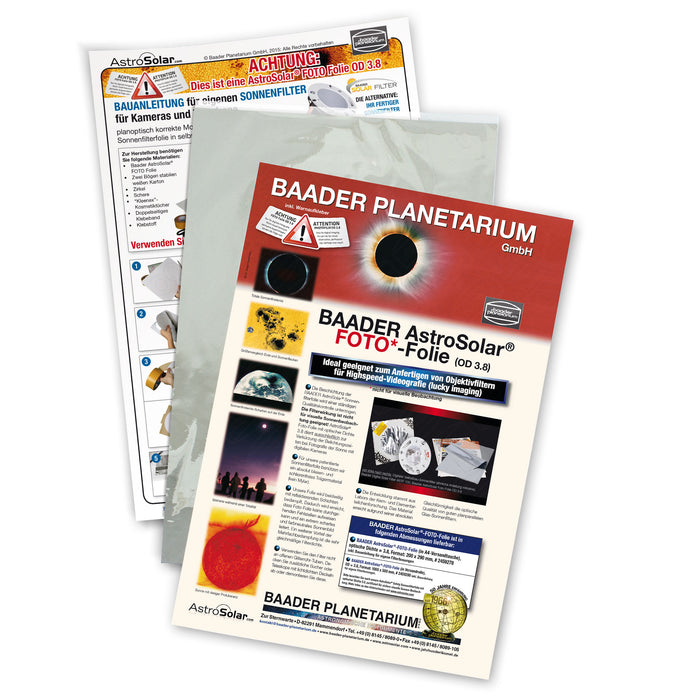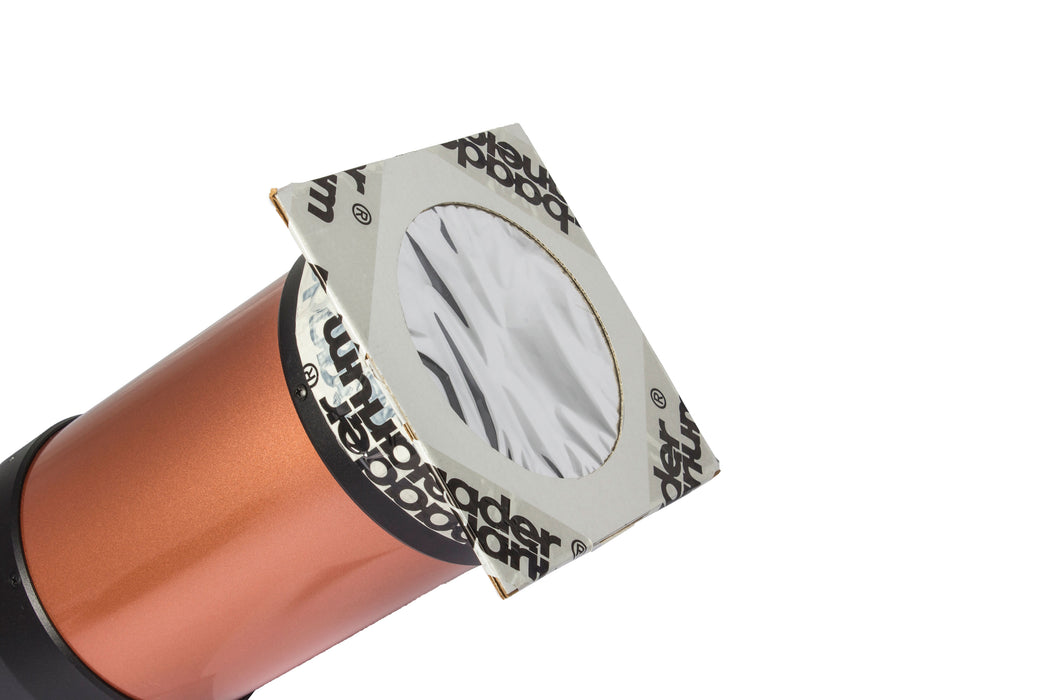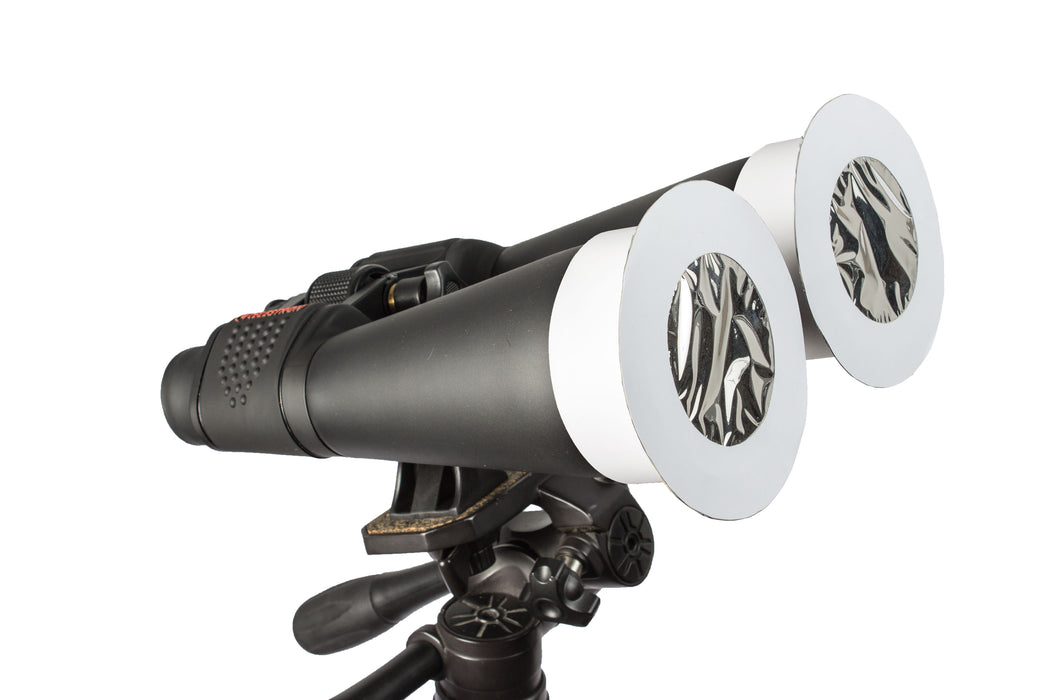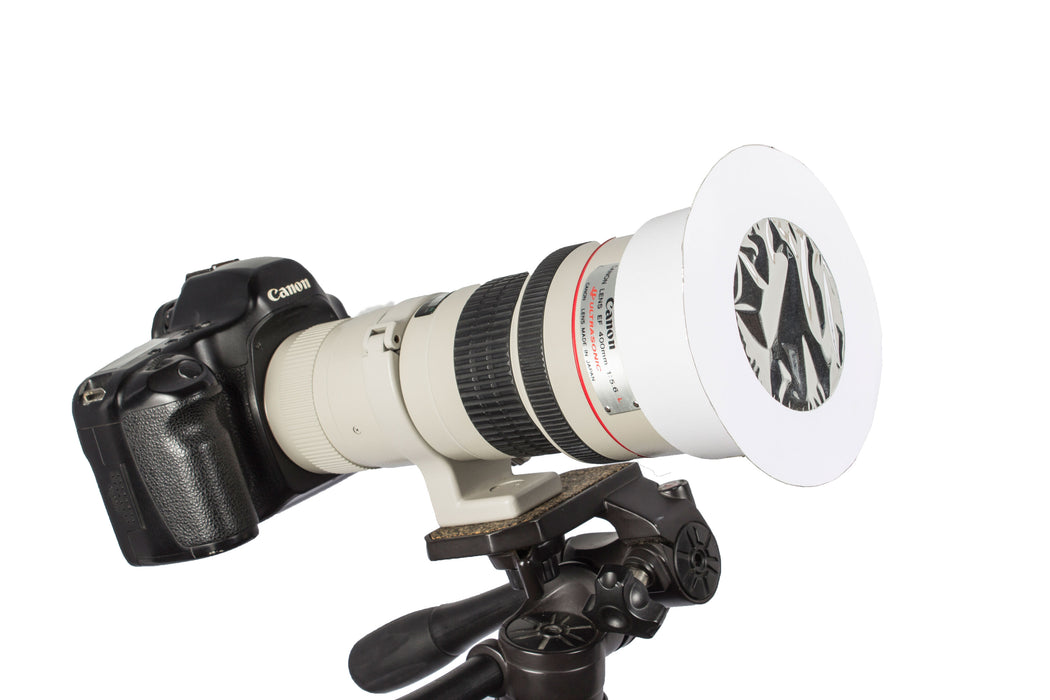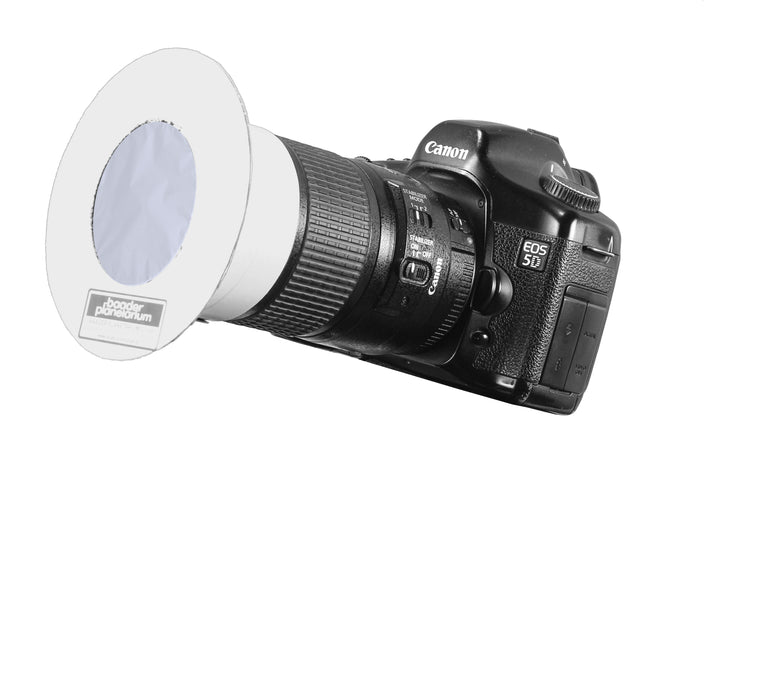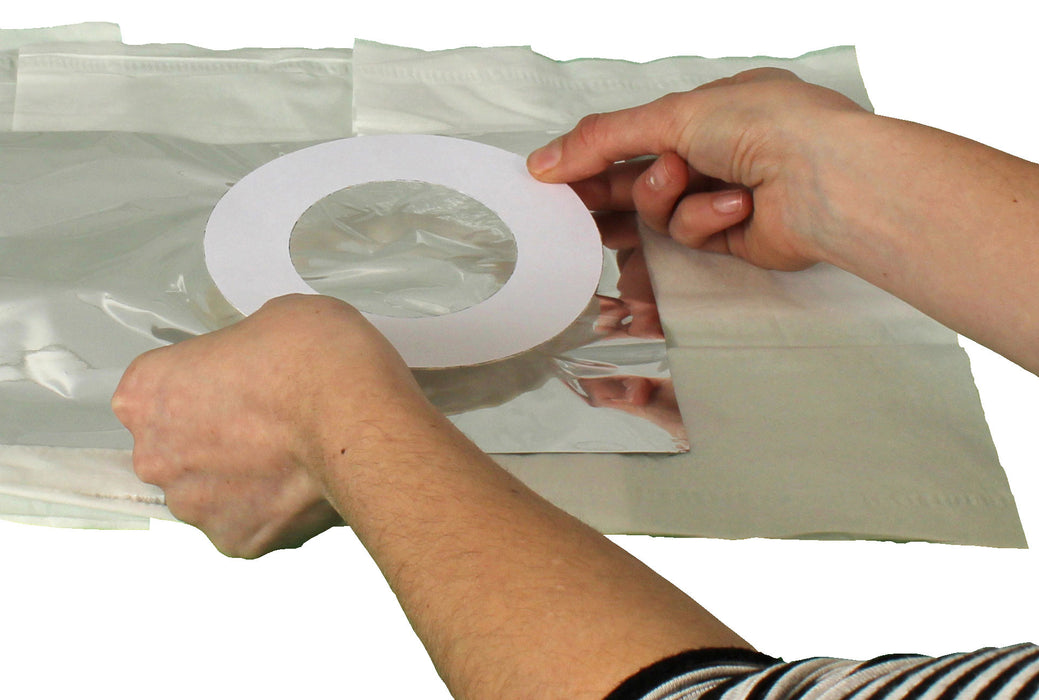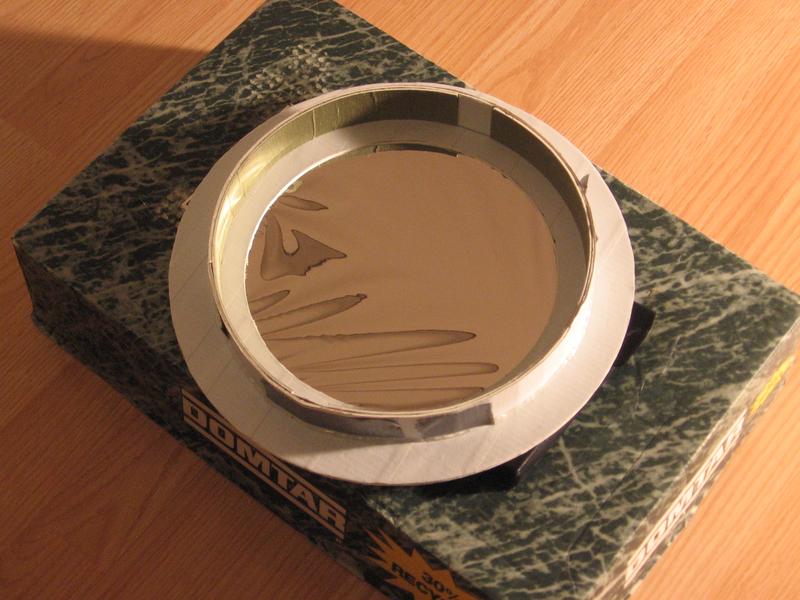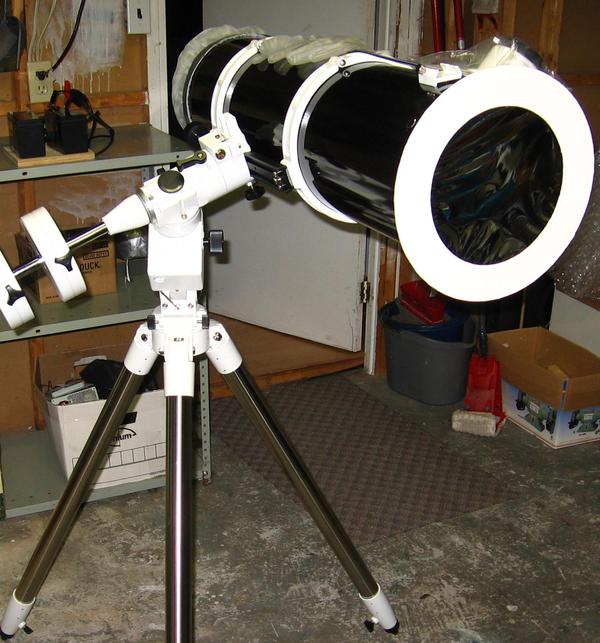Description
Get ready for the Eclipse!
Making an inexpensive filter cell using Baader AstroSolar Film
- AstroSolar Photo Film (imaging only), telescope quality, Optical Density OD = 3.8
- Digital solar imaging at highest magnifications and short exposure times. Not suitable for visual observation
- This highest precision film consistently produces strehl ratios of 94 to 96 percent at interferometric tests – thus it performs optically like a Fluorite Triplet Lens by Carl Zeiss or Astro Physics
-
DANGER: Not suitable for visual observation - eye injury will result from any visual use, including viewing through the optical viewfinder on a DSLR. AstroSolar Photo Film OD 3.8 is only intended to be used by well-experienced Astro-imagers. This material is not intended to serve for protection during visual solar observation.
Baader AstroSolar™ Safety Film (Patent pending in all European States - voted for "Astro-Product of the Decade" in the USA, and Sky and Telescope's Sept 2000 Review "A New Standard in Solar Filters") Baader Planetarium's AstroSolar™ Safety Film delivers white light views of the Sun that are unmatched by any other objective solar filter or material. The views through AstroSolar display fine solar details, including fine penumbral detail, solar granulation, and lighter colored faculae. The disk is set against a dark background, free of the haze and scatter that is common in typical metallized 'mylar', smoked films, or inexpensive glass filters.
It is possible to further improve the stability and sharpness of the solar image through the use of the Baader Solar Continuum Filter. Views of granulation and faculae are particularly enhanced through the use of this filter, in combination with AstroSolar. Users of achromatic refractors will be particularly pleased with the performance using this additional filter.
Safety Information
Safety Warning - How to Protect Your Eyes (link to Safety Information)
Safety Precautions - How to Prevent Accidents (link to Safety Precautions)
Optical Quality
For a full interferometric report on the optical quality of AstroSolar®, please click on the image below:
AstroSolar and TurboFilm Interferometric Report
This highest precision film consistently produces strehl ratios of 94 to 96 percent in interferometric tests - thus it performs optically as well as a high quality Fluorite Triplet Lens by Carl Zeiss (per interferometric test results). Baader even had a hard time themselves seeing any difference in performance between AstroSolar™ and 1/20 wave precision optical windows which they stocked from Zeiss. Their stock of precision polished plates runs into tens of thousands of $ - all stocked for the 1999 eclipse - but AstroSolar™ was so good in fact, that these plates were hard to sell. Baader AstroSolar Safety Film shows notably more sharpness and contrast than any competitive objective filter we know of, especially including the affordable Glass Objective Filters and other commonly available Mylar filters. We have found that only our own superb Baader Herschel Safety Wedge is able to noticeably exceed the performance of AstroSolar.
AstroSolar™ is essentially free from pinholes, since - unlike even the most expensive glass filters - it is coated on both sides, so that the chance of two pinholes overlapping each other is extremely faint. Pinholes do appear, but to 1 out of 10000 only, in optical density 2.5!
This foil is CE-tested and intended for solar viewing with optical instruments (telescopes, binoculars, cameras). AstroSolar® Safety Film 5.0 is not authorized to be used for naked eye solar observation or production of solar viewers. For direct solar viewing without telescope, binocular or camera optics, inquire for our EN ISO 12312-2:2015 certified Baader Solar Viewers equipped with AstroSolar® Silver/Gold Film.
History and goal of AstroSolar™:
Baader Planetarium delivered solar safety film for 19 million eclipse viewers that were used throughout Europe for the August 11 Eclipse. Not one user of their films suffered from eye damage. Baader has produced solar safety films for over 17 years and has reason to claim a high degree of competence for all aspects of solar observation. With Baader AstroSolar™ we are set out to show you the Sun' s hidden grandeur at a fraction of the cost for comparable equipment. Real professional solar work has typically been restricted to a few die hard amateurs who would put up the $1000,- or more for a real precision 1/20 wave glass filter. Now you can get an equally precise AstroSolar™ filter to fit an 8" aperture for $36 (or much less even, if a whole group of people share a larger roll of film). No longer will solar observation be a "ho hum" experience, where you look into your telescope through an "economy priced" glass or mylar filter and wonder what this kind of amateur activity is all about. Many of our customers have pushed out the glass or mylar from their older filters only to use their filter cell for AstroSolar™ - and experience a completely new, crisp, and incredibly esthetic sun. All of a sudden, the telescope has the same performance during the day that it has at night, and now they realize that the consistently 'poor seeing' at their site was really just a consistently poor solar filter.. We are always amazed how easily some amateurs accept mediocre sharpness during observation of our nearest star, while they can be extremely critical if their telescope does not perform perfect on other stars (or planets).
Production secrets / products:
The development of AstroSolar™ was only possible due to the incredible demand during the 1999 eclipse. Dozens of miles of film were destroyed during tests to produce the tooling and process techniques to produce an absolutely uniform molecular structure for the substrate. Not to speak of the related treatments, annealing and dual side coating that the film undergoes until it has attained the desired properties.
Specifications
A4-size: ca. 20 x 29 cm (8" x 12")
| MANUFACTURER |
Baader Planetarium |
| SKU (#) |
2459278 |
| EAN CODE |
4047825034595 |
| WEIGHT (KG) |
0.007 |
| USAGE |
Digital solar imaging at highest magnifications and short exposure times. Not suitable for visual observation |
| ASTROSOLAR FILM |
AstroSolar Photo Film |
| OPTICAL DENSITY |
3.8 |
| INNER DIAMETER / CLEAR APERTURE (MM) |
ca. 20 x 29 cm |
| SOLAR WAVELENGTH |
Whitelight (integral light) |
100 x 50 cm (40" x 20")
| MANUFACTURER |
Baader Planetarium |
| SKU (#) |
2459280 |
| EAN CODE |
4047825008541 |
| WEIGHT (KG) |
0.032 |
| USAGE |
Digital solar imaging at highest magnifications and short exposure times. Not suitable for visual observation |
| ASTROSOLAR FILM |
AstroSolar Photo Film |
| OPTICAL DENSITY |
3.8 |
| INNER DIAMETER / CLEAR APERTURE (MM) |
ca. 100 x 50 cm |
| SOLAR WAVELENGTH |
Whitelight (integral light) |
Downloads
Instructions to use AstroSolar Film
How to make your own PHOTO solar filter for cameras and telescopes
Testreview AstroSolar Photo Film
